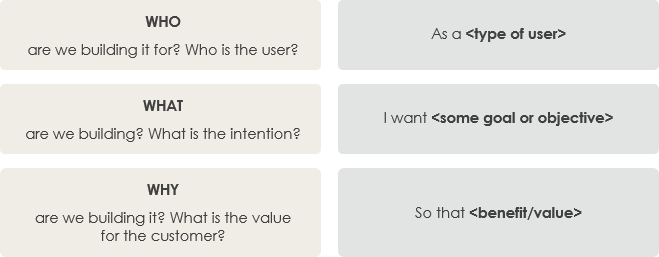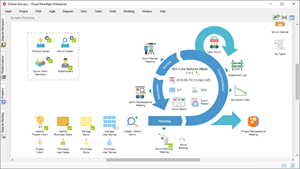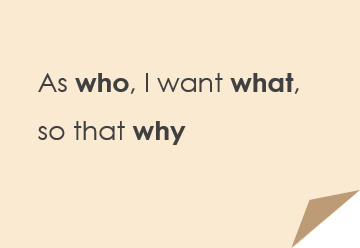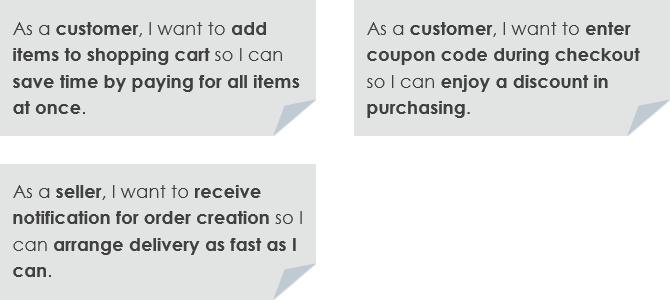There are opinions on the definition of a user story and how to best go about creating one. Various templates, techniques, and acronyms are used to help product owners write user stories. The most common technique is the role-feature-reason template for teams and product owners starting to write user stories structured into three parts: (1) As a (Role); (2) I want (Feature); So that (Reason).


Best Scrum Software Every Project Needs
A powerful scrum software that supports scrum project management. It features scrum tools like user story map, product backlog management, sprint backlog management, task management, daily scrum meeting, sprint planning tool, sprint review tool, sprint retrospective tool, burndown, impediment, stakeholder and team management.
This template serves as “training wheels”, reminding people in conversation about user stories to pay attention not just to “what” the desired software product is to do, but also “for whom (who)” it does it and in pursuit of “what objectives (why)“. Here is the purpose for using the template when creating user stories:

This three parts template keeps the focus on who (the role), what (the feature), and why (the reason). This prevents the product owner from giving the development team too much information about how they should implement a solution. By focusing on three parts, the development team is empowered to find the best technical solution and to avoid the story to be overly specified prior to the sprint planning.

| About Visual Paradigm |
 Visual Paradigm help organizations stay competitive and responsive to change faster and better in today’s fast changing environment. Our award-winning products are trusted by over 320,000 users in companies ranging from small business, consultants, to blue chip organizations, universities and government units across the globe. It enables organizations to improve business and IT agility and foster innovation through popular open standards and process frameworks.Visual Paradigm, a killer Agile feature in 2018, introduced Scrum Process Canvas for automating the way a Scrum team to create, manage and deploy software application that empowers the team to continuously improve their performance at unprecedented speed and scale. Visual Paradigm help organizations stay competitive and responsive to change faster and better in today’s fast changing environment. Our award-winning products are trusted by over 320,000 users in companies ranging from small business, consultants, to blue chip organizations, universities and government units across the globe. It enables organizations to improve business and IT agility and foster innovation through popular open standards and process frameworks.Visual Paradigm, a killer Agile feature in 2018, introduced Scrum Process Canvas for automating the way a Scrum team to create, manage and deploy software application that empowers the team to continuously improve their performance at unprecedented speed and scale.
Manage the Entire Scrum Process in One Page
|